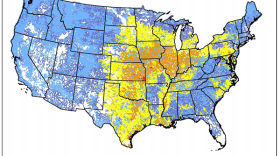The Illinois EPA said it detected higher than acceptable levels of a crop herbicide in the lake that provides Macomb much of its water.Atrazine is a widely used in corn production. It's carried into Spring Lake by run-off from nearby fields, but the high levels the EPA cited were not caused by heavy rainfall this year.
That's because the data the IEPA is using is from 2009. The delay is caused by the time it takes not only to collect but to process water quality data from around the state.
Jennifer Clarke with the IEPA said the agency may have collected more recent readings but the 4 year old data is the most recent she has access to.
"The way our database is set up, when we get the data we have to go through a lot of rigmarole to just make sure the data is ok," Clarke said.
She admits that the levels vary depending on how much atrazine farmers apply and how much rain the regions gets. So the levels in the agency's draft TMDL report, or total maximum daily limit, could have gone significantly up or down since 2009.
When we get the data we have to go through a lot... to make sure the data is ok
The IEPA is recommending farmers use conservation practices to reduce the amount of runoff into the Spring Lake Water Shed, though the IEPA cannot force them to adopt these practices.
The Macomb Water Plant said it uses a form of activated carbon, which is what the IEPA recommends to deal with atrazine.
The city says the actual levels of the chemical in the drinking water have not exceeded recommended amounts.





